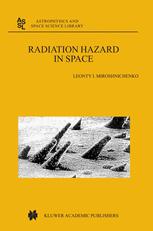

Most ebook files are in PDF format, so you can easily read them using various software such as Foxit Reader or directly on the Google Chrome browser.
Some ebook files are released by publishers in other formats such as .awz, .mobi, .epub, .fb2, etc. You may need to install specific software to read these formats on mobile/PC, such as Calibre.
Please read the tutorial at this link: https://ebookbell.com/faq
We offer FREE conversion to the popular formats you request; however, this may take some time. Therefore, right after payment, please email us, and we will try to provide the service as quickly as possible.
For some exceptional file formats or broken links (if any), please refrain from opening any disputes. Instead, email us first, and we will try to assist within a maximum of 6 hours.
EbookBell Team

0.0
0 reviewsThe mono graph contains 8 chapters, and their contents cover all principal aspects of the problem: 1. Introduction and brief his tory ofthe radiation problem and background information ofradiation hazard in the near-Earth and interplanetary space. 2. General description of radiation conditions and main sources of charged partic1es in the Earth's environment and interplanetary space, effects of space environment on spacecraft. 3. Basic information about physical conditions in space and main sources of charged particles in the Earth's environment and interplanetary space, in the context of "Space W eather" monitoring and prediction. 4. Trapped radiation belts of the Earth (ERB): theory of their origin, spatial and temporal dynamics, and experimental and statistical models. 5. Galactic cosmic rays (GCR): variations of energetic, temporal and spatial characteristics, long-term modulation, and anomalous cosmic ray (ACR) component, modeling oftheir dynamics. 6. Production of energetic particles (SEPs) at/ne ar the Sun: available databases, acceleration, propagation, and prediction of individual SEP event, statistical models of solar cosmic rays (SCR). 7. Existing empirical techniques of estimating, prediction and modeling of radiation hazard, methodical approaches and constraints, some questions of changes in the Earth's radiation environment due to changes of the solar activity level. 8. Unresolved problems of radiation hazard prediction and spacecraft protection, radiation experiments on board the spacecraft, estimating of radiation conditions during interplanetary missions. Space does not allow us to explain every time the solar-terrestrial and radiation physics nomencIature used in current English-language literature.